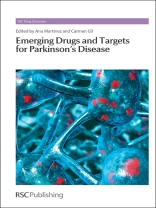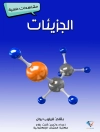Affecting over 1.5 million people across the world, Parkinson’s disease is a progressive neurological condition characterized, in part, by the loss of dopaminergic neurons in the substantia nigra pars compacta. It affects 1.5% of the global population over 65 years of age. As life expectancy is increasing, over the next few years the number of patients with Parkinson´s disease will grow exponentially. To date, there are no available treatments that are capable of curing Parkinson´s disease, and the current goal of therapy, dopamine replacement strategies, is to reduce symptoms. After several years of disease progression, treatment is complicated by the onset of motor fluctuations and dyskinesias. This information reveals the great importance and social need of finding an effective therapeutic intervention for Parkinson´s disease.
This exemplary new book reviews some of the most outstanding examples of new drugs currently in pharmaceutical development or new targets currently undergoing the validation process to try to reach the Parkinson´s drug market in the next few years as potential disease modifying drugs. Providing up to date and comprehensive coverage, this book is essential reading for researchers working in academia and industry in any aspect of medicinal chemistry or drug discovery.
表中的内容
Overview on Parkinson disease. Rational for pharmacological intervention;
Dopaminergic pathway and L-Dopa treatments. Future challenges;
COMT Inhibitors: present problems and relevance of the new ones;
MAO inhibitors for PD (Safinamide);
Dopamine agonist: present and future (Pardoprunox);
Therapies for dopaminergic-induced dyskinesias in Parkinson disease. (Fipamizole);
Beyond the dopamine receptor: regulation of protein phosphatases;
Molecular chaperones as rational drug targets for Parkinson’s disease therapeutics;
Alpha-synuclein assembly as a therapeutic target of PD;
Alpha-synuclein (alpha-syn) phosphorylating polo-like kinase 2 (PLK2) as target for PD;
Hsp70 molecular chaperones and Parkinson’s disease;
Glutamate receptors as therapeutic targets for Parkinson’s disease;
Targeting adenosine A2A receptors in Parkinson’s disease;
Leucine-rich repeat kinase-2 as target for Parkinson’s disease;
Phosphodiesterase inhibitors for PD treatment;
P2X7 purinergic receptor: role in neurological disorders;
Therapeutic role of 5-HT1A receptors in the treatment of schizophrenia and Parkinson’s disease;
D3 dopamine receptor agonists: neuroprotection in Parkinson’s disease;
Antioxidants and PD;
Tryptophan metabolism in Parkinson’s disease;
Grafted neural stem cell-derived dopaminergic neurons for PD Therapy;
Gene therapy for Parkinson’s disease;
Carotid body autotransplantation in Parkinson disease;Neurotrophic factor therapy for Parkinson’s disease
关于作者
Dr Carmen Gil is staff scientist at Center for Biological Research of Spanish National Council for Research (CSIC) with a background in Medicinal Chemistry and Pharmacy. She received her Ph.D. from Complutense University of Madrid in 2001. After a postdoctoral appointment at Bonn University (Germany) she joined the CSIC. Her research is oriented to the discovery and development of new small-molecules as innovative target-based drugs and her research areas have been focused on phosphodiesterase and kinase inhibitors as innovative drug candidates for neurodegenerative diseases. She is involved in different projects that apply her background and experience in the development of specific parasite phosphodiesterase and kinase inhibitors in the fight for neglected parasitic diseases. She is author of more than sixty scientific publications, has four active patents in the field and has contributed to several books.












